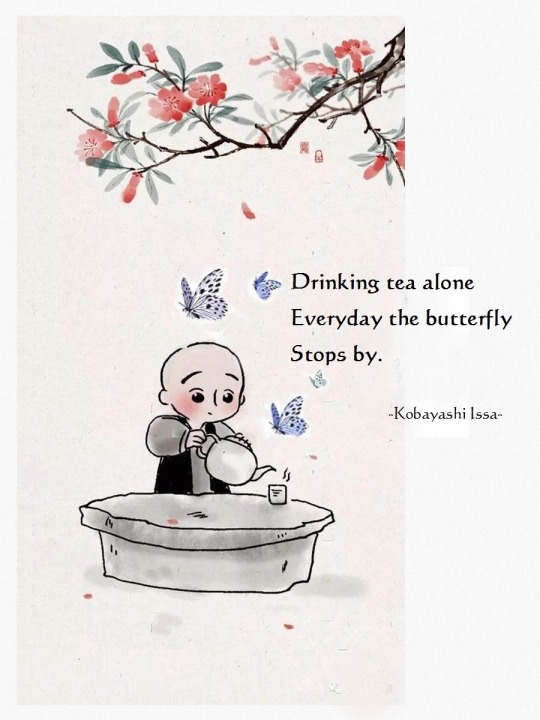#Zen Tea
Photo

The Quest for Buddhism (115)
Buddhist cosmology
Samatha meditation – Part 2 [Part 1]
In Mahayana Buddhism, there are 5 hindrances (Ref) to samatha (Skt. shamatha, cessation): faith, determination, effort and sophistication of mind (belief, aspiration, diligence and lightness of mind) against the heavy-mindedness of omission, and the sati (Skt. smrti) against the careless mind.
Against the mind's losing sight of the object, against the mind's sinking without grasping the object such as depression, and against the mind's dissipation without staying on the object, it is correct knowledge, and against the rest it is inquiring mind and calmness of the mind.
Samatha meditation and jhana (dhyanaRef) are often considered synonymous by modern Theravada, but the four jhanas involve a heightened awareness, instead of a narrowing of the mind.
Through the meditative development of calm abiding, one is able to suppress the obscuring five hindrances: sensual desire, ill-will, tiredness and sleepiness, excitement and depression, and doubt. With the suppression of these hindrances, the meditative development of insight yields liberating wisdom.

仏教の探求 (115)
仏教の宇宙論
サマタ瞑想・その2(その1)
大乗仏教 (だいじょうぶっきょう、梵: マハーヤーナ)では止に対する5つの障害(参照)があるとし、心が重い懈怠 (けだい)に対しては信仰(信)、決断力(意欲)、努力(勤)、そして心の巧妙さ(軽安)であり、注意深さのない失念に対抗するのはサティ(梵: スムリティ、念)であり、鬱のように心が対象を把握せずに沈む惛沈 (こんじん) と心が対象にとどまらず散ってしまう掉挙 (じょうこ)には正知であり、それ以外に対しては、探求心と心の落ち着きが対抗する。
サマタ瞑想と禅定 (梵: デイヤーナ、巴: ジャーナ参照)は現代の上座部仏教 (じょうざぶぶっきょう、巴: テーラワーダ仏教)ではしばしば同義と考えられているが、4つのジャーナは心を狭めるのではなく、意識の高揚を伴うものである。
平静の瞑想的発展を通じて、人は官能的な欲望、悪意、疲労と眠気、興奮と落ち込み、疑いという不明瞭な五つの障害を抑制することができるようになる。これらの障害を抑制することで、瞑想的な洞察力を高め、解放的な智慧を得ることができる。
#samatha meditation#zen#mindfulness#buddhism#jhana#5 hindrances#zen tea#zen ikebana#wisdom#philosophy#nature#buddhist cosmology#art#art of zen
130 notes
·
View notes
Text
Addiction: Food, Sugar, Medication

Facebook Live Series #2
Addiction or Dependence Syndrome is defined as a cluster of physiological, behavioural, and cognitive events in which the use of a substance or a class of substances takes precedence over other previously valued behaviours in a given individual.
WHO is the World Health Organisation. Substance abuse is defined as the detrimental or dangerous use of psychoactive substances such as alcohol and illegal narcotics. Psychoactive substance use can result in dependence syndrome, which is a collection of behavioural, cognitive, and physiological phenomena that develop after repeated substance use and typically include a strong desire to take the drug, difficulties controlling its use, persisting in its use despite negative consequences, a higher priority given to drug use over other activities and obligations, increased tolerance, and, in some cases, a physical withdrawal state.
SUGAR ADDICTION: For more information to help regarding Sugar Addiction please click the links below:
https://pubs.acs.org/doi/abs/10.1021/np50023a013?journalCode=jnprdf https://www.sciencedirect.com/science/article/pii/S0889157506001827 https://www.youtube.com/watch?v=71eAkmUYrDQ
Zen's Tea Favorite videos:
https://www.youtube.com/watch?v=aCUbvOwwfWM
https://youtu.be/4tHq4_a0y9U
If you find this holistic health information useful, please share it and/or leave feedback. All comments and inquiries are much appreciated. Thank you very much. -The Zen Tea House.
Article Resource - https://zenstea.com/blogs/news/addiction-food-sugar-medication
0 notes
Text
What Is The Meaning Of "Zen Tea" When You Drink Tea?
What Is The Meaning Of “Zen Tea” When You Drink Tea?
“Zen Tea” is also called “Chan Cha Yiwei”.For tea friends, must be familiar with these words when you guys drink tea.
It can be seen in teahouses and teahouses all over the street. The banners hanging high are the four words.
Usually used in the tea mat, the tea plate will also be part of the printing lines, which are also the four words.
What Does Zen Tea Mean And Why It Is Highly…

View On WordPress
0 notes
Photo
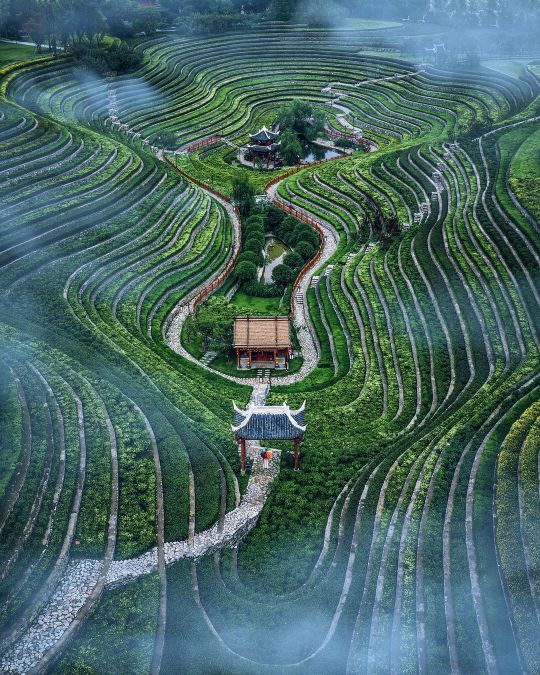
” Behold the fingerprint of the land,” Guizhou, China.
Nestled in the rolling hills of Guizhou, a remarkable tea plantation bears witness to the astounding beauty of nature's patterns.
Photo by: @youknowcyc
#art#landscaping#agriculture#china#guizhou#plantation#earth#nature#green#drone photography#tea#hills#zen#retreat#landscape architecture
1K notes
·
View notes
Text
The real reason Mori keeps letting the ADA steal his people is cause it gives him more excuses to see the unrequited love of his life, Fukuzawa Yukichi
#TELL ME IM WRONG#Yosano Dazai and Kyoka are the ADA and PM's divorce kids#Yosano is old enough that she doesnt ever agree to see him#but Dazai he can force to see him cause he had Dazai's Chuuya#and Kyoka comes to visit for tea with Kouyou#Shes more kouyou and atsushi's divorce kid but mori will use any excuse to he fukuzawa tbh#fukumori#yukichi fukuzawa#ougai mori#mori totally lords it over fukuchi's head using tachihara has a messager#zenku soukoku#bsd spoilers#bsd z skk#bsd zskk#zskk#zen soukoku#zen skk#qpr ships
101 notes
·
View notes
Photo

Japanese garden by miniature artist Tatsuya Tanaka, using zundamochi (edamame cake) as bushes, rice as soil, and a chasen (tea whisk) as yukitsuri.
Yukitsuri are bamboo pole+ropes towers placed upon trees to protect them from heavy snowfalls:

(picture source)
#japan#art#craft#miniature#Tatsuya Tanaka#zen garden#japanese garden#zundamochi#chasen#tea whisk#yukitsuri#garden rope#wintering garden
498 notes
·
View notes
Text
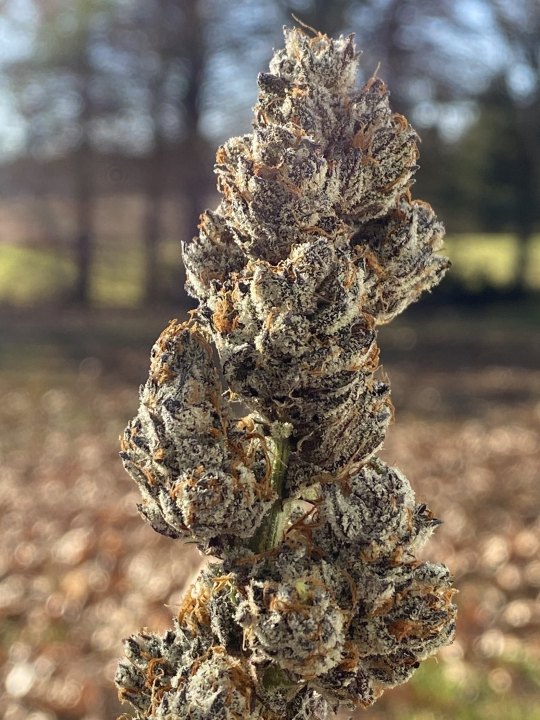
planet sherb grown by zen tea 🫡
31 notes
·
View notes
Text
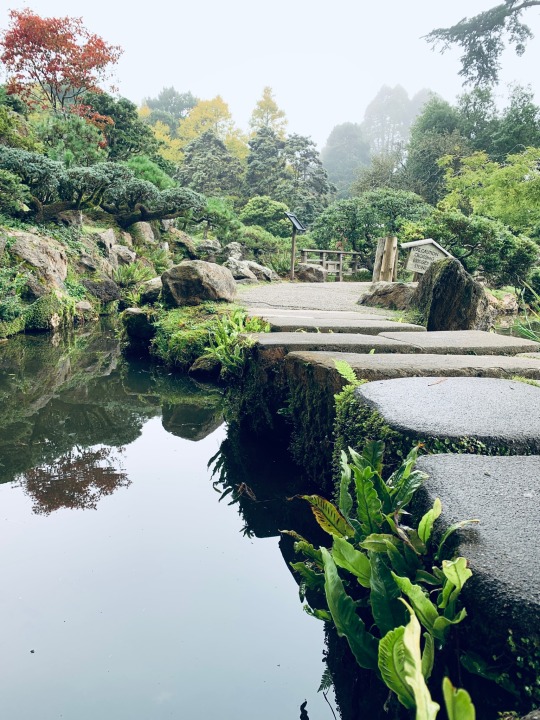
#stone path#japanese garden#japanese tea garden#pond#asian garden#san francisco#peaceful garden#cottagecore#naturecore#cozy cottage#plantcore#gardencore#nature#plants#zen garden
131 notes
·
View notes
Photo
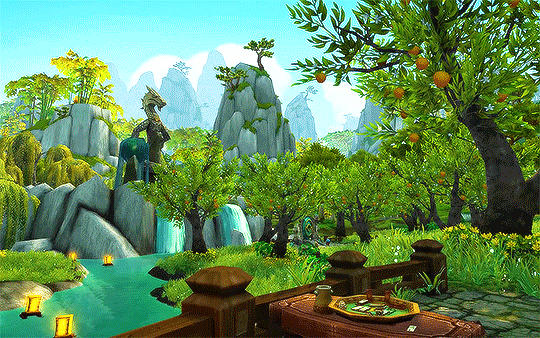


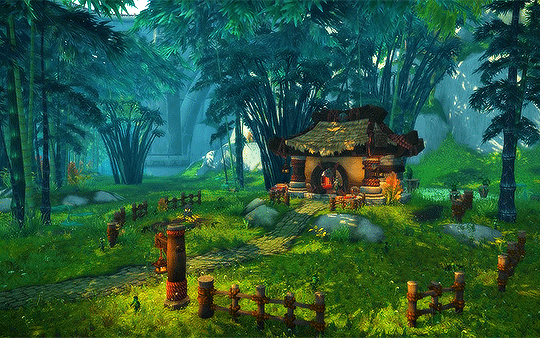

WORLD OF WARCRAFT • LOCATIONS (72/?)
Jade Forest (part. I) (requested by magicino)
#world of warcraft#warcraft#wowedit#gamingedit#wowlocations#here you go friend. hope you like it :)#i sat down with a cup of green tea to make this and i have never felt more zenned out in my life lol
214 notes
·
View notes
Text




Talking points for the one of the most glorious of days for Caryl info. (Very happy I waited on my hill-to-die-on knowing this was coming eventually)
-Carol once again has a most glorious giant-ass gun, one which she uses to protect her Pookie with.
-Potential shoulder massage 2.0!? (There is a vid of that pic out there and yes he’s “helping her out” 😉
-Greg has been on set and might be directing Terminus 2.0
-Daryl looks beat up but doesn’t have a gun because Carol IS his weapon.
-I am in love with the costumers for giving her that purple leather jacket.🤤😍
#caryl#caryl positivity#carol peletier#daryl dixon#carol and daryl#caryl is endgame#carol loves daryl#daryl loves carol#this zen tea just got better with time
51 notes
·
View notes
Text
How Leaky Gut, Gary Snyder, Jim Harrison, and Okakura Kazuko Helped Me Rediscover Coffee.
Or, My Dad was a Zen Master, and I Didn’t Notice.
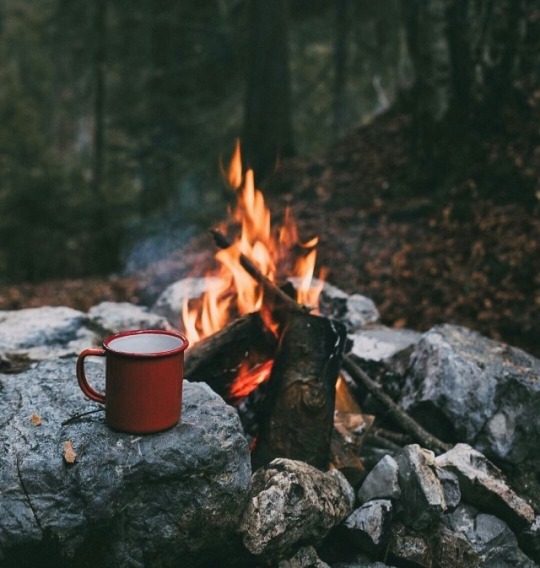
Zen is not some fancy, unique art of living. Our teaching is to live, always in reality, in its exact sense.
Shunryu Suzuki
It began simple enough, well, not that simple. The Traditional Chinese Physician diagnosed my partner with leaky gut syndrome. That sounds terrible, and it was for her. She loved boxed prepared foods and was not fond of vegetables. Time and malnutrition brought on by General Mills, Conagra, and a variety of corporate food chemists had caught up to her, killing the terrarium in her gut so that everything she ate penetrated past the lichen-like lining of her intestines and digestive tract so acid ate at the inner skin like a chemical spill eating the epoxy resin on a high school science class table. This acid wash triggered various autoimmune disorders and led to arthritis, diarrhea, malaise, and general misery for her and those around her. She spent a lot of time in the bathroom, travel was curtailed, and there was general unhappiness all around because the irritation in her gut often seeped out of her vocal cords.
The Physician approached me in the waiting room. At the same time, my partner lay in a private room with needles, restoring her chi into its proper channels and outlining the changes needed in our lifestyle to cure this plague of misery. The doctor told me I also needed to join the new dietary regime to be supportive.
“Well, OK,” I said with outward unfelt enthusiasm.
So we went home and cleaned cabinets, throwing packaged foods away and feeling pangs of guilt — should we throw it away or give it to a shelter? I had visions of homeless people excitedly getting free food that passed as quality and eventually needing a traditional Chinese physician to tell them why they had started crapping so much and with such urgency. I took it to the dumpster, deciding that if they dove for it, it would at least not be the typical garbage they found to eat there that already messed up their guts and energy meridians, contributing to a miserable lifestyle. Their choice would not be my responsibility. I am, after all, an American and well-practiced at ignoring or at least rationalizing my guilt at ecological and cultural destruction. The dumpster became my version of a clear-cut in Oregon. Behind twenty-five yards of pristine natural beauty and unseen from the speeding motorists on the interstates is a desolated waste that can only support the lifestyle of the rich and infamous. To paraphrase an adage from pop psychology, “What we don’t think about, we pretend we don’t bring about.”
And then there was the Mr. Coffee. It sat on the kitchen counter, a yellowing plastic oddly shaped box protectively embracing a clear glass carafe that produced without much effort or thought a dark brown nectar that started our day. It was simple: you pulled out the black plastic cup, lined it with bleached paper, measured several small scoops of coffee, replaced the black plastic cup, filled the box with water, hit the button, and left the room, knowing the watery brown liquor would be ready after the morning shower and shave. Frankly, I was addicted to the tasteless brown water that came out, full of caffeine that gave me a lift but no longer a sweet aroma, depth of flavor or anything but a buzz. The Physician said that they had to go. The little lichen and animal-like bacteria in the gut didn’t like the acid. She equated it with Agent Orange. Being of a certain age, I was more familiar with Agent Orange than I wanted or should be, and I suspect she knew that just by looking at my grey hair. She was playing dirty there, but “Well, OK.”
So Mr. Coffee went somewhere. I didn’t ask because I didn’t want to become like stomach acid and create more irritation. To ease the pain, I read an article by a Buddhist who said he quit coffee for six months and felt great but eventually had a cup of the dark roast at Starbucks. He didn’t get a buzz but got jazzed for two days. That didn’t help as I read his article while drinking weak green tea with ginger, waiting for caffeine-induced enlightenment.
As a caffeine junkie and failed Roshi, I needed some relief. Each morning, I scrolled Tumblr’s pictures while drinking my tea and tried to distract myself from the lack of coffee and junk food. Before I went to Tumblr and its processed version of the good life, I had returned to Zazen, you know, meditative sitting, but I was haunted by Buddhist demons carrying Starbucks cups. That was akin to the demons I had seen as a young college student Buddhist “wannabe” reading Alan Watts and D.T. Suzuki, practicing their version of sitting zazen. The forms Mara took in those sittings mostly looked like the red-headed girl I was dating. She would arise in my meditations dancing with her female roommate, both naked dakinis looking beguilingly at me, beckoning me. Needless to say, I never found a Bodhi tree as lovely as Keanu Reeves’ in Little Buddha. I usually went to the red-headed girl’s apartment, leaving my cat to fend for herself for several days. The cat was often irritated with me — the story of my life with females.
Giving up zazen for scrolling Tumblr didn’t help much. There were many beautiful images of landscapes, cityscapes, horses, wildlife, and old trucks and cars. It is a veritable Life magazine online, and being a trained art historian studying reproductions of pictures was right up my alley. There were many images of beguiling dakinis, but more provocatively undressed than those I showed freshmen when I taught art history. As an old man, experienced in the wiles of youthful Dakinis, they looked generally unbeguiling and un-tempting. Sometimes, they wore a plaid flannel shirt tied above the waist, standing next to a campfire, or sitting on the tailgate of a pickup, holding a tin cup of coffee; those got to me — I love plaid, and there was coffee. Even more painfully, there were camping pictures, not just any camping pictures but old percolators on campfires, some with steam coming out of their spouts, some with the cooked brown fluid being poured into cups. As I hit the little heart to acknowledge I liked those images, they appeared more and more frequently. I began to seriously think there were hells, Buddhists and otherwise, and real demons determined to steal my peace.
I was not always addicted to coffee. It all began next to the Seine at a little cafe on the Boulevard Saint-Germain, where I first tasted café au lait. I was a typical 18-year-old 1970s kid backpacking through Europe, and Paris was a first stop. I hated wine and was not too fond of beer, though I drank large quantities with friends at college my first term, and Perrier was breaking my travel budget. One day, I learned that café au lait was mostly milk, and being a farm boy still wedded to the idea that milk was good for me, I downed a cup of café au lait, then another and another. At the end of my first sitting, the waiter counted eight saucers and asked if “Monsieur was feeling okay.” “Sure,” I replied with composure I didn’t feel. I left the café, strolled down the Qui Voltaire, crossed the river on the Pont de la Concorde, hiked through the Tuileries and toured the entire Louvre in 45 minutes flat.
I continued my travels in Europe and tried every type of coffee I could find, settling on Turkish coffee in little cups with big cubes of sugar. In a pinch, I would accept espresso, but by the time I got to Italy, espresso seemed a weak way to live.
Then I returned to America, tried various diner coffees, and wondered why they served browned hot water. By then, Mr. Coffee had replaced percolators and any other form of making coffee all across America. Joe DiMaggio was happy and smiling on every new box containing a coffee maker and heading to an American home.
I tried to make Turkish coffee. Generally, I failed and finally settled on strong home-brewed Mr. Coffee with lots of heavy cream. I would occasionally daydream about camping with my parents and blue-speckled-ware coffee pots on the fire or the aroma of the coffee their electric percolator made as it rhythmically gurgled in the kitchen. It never occurred to me to get an electric percolator because they were, thanks to Mr. Coffee, passe and un-American. I also avoided percolator coffee because I associated it with the odor of my parent’s cigarettes. No matter how good the coffee smelled, I had an aversion to their cigarettes and my parents. Therapy helped me overcome my aversion to my parents but not cigarettes, and the association of stale, burned, chemical-treated tobacco and perked coffee remained.
I felt good after six months of a healthy life, eating right, losing weight, and spending less time on the toilet. I still, however, craved caffeine. I started looking at Mr. Coffee online and realized it was a version of pour-over coffee. So, I bought a plastic two-cup Merlita sit-on-the-cup pour-over device. It was an odd orange-pink affair, but It made a good single cup of coffee, and I discovered that the two-cup size worked just fine to make a single cup of coffee. I understood that a pour-over made better coffee than Mr. Coffee, even though the process was the same. The two-cup pour-over process did require me to pay attention to what I was doing.
This pour-over coffee period came while I re-read Gary Snyder and Jim Harrison, two old Buddhists who were even grouchier than me. They got me rethinking, too, about the practice of the wild and how aggravated I was with General Mills and Conagra and the whole mess of modern American consumerism I allowed myself to get sucked into. I realized I missed camping, hiking, and the smell of coffee perking on an open campfire. I truly missed robust campfire coffee with its flavor and aroma.
I bought an Italian Bialetti Moka pot to remain civilized about my need for aroma. ( I didn’t say I escaped consumerism, just I was aggravated with it.). As I entered the ritual each morning of making coffee in a Moka pot, so strong that I had to serve it in tiny espresso cups to keep the buzz low, I realized that making coffee was really about paying attention, like a Japanese tea ceremony. It took time and required focused measuring of the coffee, packing the funnel, preheating the water, a degree of zazen, listening for the gurgle of the pot and knowing when to take it off the heat so it did not get bitter. I liked the meditation of preparing it. I hated the tiny, over-caffeinated cups. ( My coffee fast had at least broken my addiction to triple-dose caffeine.)
Then we had a cold front, I mean a really cold front that made me wish I had remembered to close the windows the night before, and I had visions of camping, dakinis in plaid flannel shirts, me in plaid flannel shirts, lakes and campfires and a percolator on the fire. It was a memory of connection and loss rolled into one. I was young, and it was a time before Alan Watts and D.T. Suzuki when I knew how to sit, breathe, watch, observe, be present, and smell the coffee with childlike naturalness. So, back to the consumer websites. I scanned a couple dozen percolators. Being aware that I had to make sure I was not as irritating as stomach acid in my choice, I picked a shiny stainless steel eight-cup percolator over the twelve-cup spatterware blue of my encamped youth. Two days later, it arrived and posed gloriously on my stove. Even my partner admitted to its silvery beauty.
I then read internet manuals on how to make the perfect pot of percolator coffee. They all disagreed about the amount of coffee, timing, and type of coffee. Then I remembered my dad, carefully spooning a heaping tablespoon of coffee per 6-ounce cup of water and one for the pot. I remembered how, while he measured his coffee into the basket, the pot would sit on a rock on the fire’s edge and come to a boil. He would gently lower the full basket into the boiling water, place the lid on the pot and move the pot away from the heat, allowing it not to boil vigorously but return to a slow boil so the coffee would not become bitter. And then he would wait, light a cigarette when the water would start its gentle dance in the glass cap of the lid. While he waited, he watched the perking water in the glass knob at the top of the pot without fidgeting or seeming to allow his mind to race away with him. And at the end of his cigarette, after his short version of meditation, he would lift the pot from the fire, place it on another warm but not hot rock, wait again for the basket to finish draining into the pot and remove the basket so the coffee would not become bitter, pour his mug of coffee, and sit again. Still, this sitting involvedwatching the forest and just being. The memory reminded me of Okakura Kazuko’s “Book of Tea,” his extended essay about aesthetics, tea, and Japanese life. As I remembered my Dad by the campfire, I realized Mr. Coffee’s plastic convenience erased coffee’s aesthetic from American life.
I have discovered that Coffee is not just a daily punch line at Starbucks with crazy concoctions snatched by a string of crazier motorists, nor is it the caffeine jazz you get from a neglected Mr. Coffee after a shower and a shave. Making coffee is a meditation, an act of beauty, a reminder of history and a rare act of America behaving in a more civilized way. In the Book of Tea, Kazuko comments, “The Westerner regarded Japan as barbarous while she indulged in the gentle arts of peace and began to call her civilized only when she began to commit wholesale slaughter on the Manchurian battlefields.” I realized that Mr. Coffee not only made barbarous coffee (we won’t even discuss Keurig), but Mr. Coffee was part of our uncivilized behavior toward the entire world, eliminating a small act of spirituality from our racing over-wrought lives.
I now regard the loss of Mr. Coffee not as a loss. It is a spiritual gain. Each morning now, I conduct a ritual. I rinse all my utensils, fill the pot with eight six-ounce measures of clean water, eight heaping tablespoons of freshly ground coffee and one for the pot. I bring the water to a boil, carefully insert the coffee, and place the lid on the pot. I watch until the water rises into the glass knob and then sit, and breathe for eight minutes, the amount of time I think it would have taken Dad to smoke a cigarette. I remove the pot and sit long enough to allow the water to finish draining from the basket, remove the basket and pour coffee into a mug reserved just for coffee, the one with the horses standing in a stream, drinking clear water. And then slowly sip while I sit on my porch, looking at the mountains. When it is cool enough, I wear a plaid flannel shirt and remember a time in my youth watching my father, who had never heard of Alan Watts, D. T. Suzuki, or Zen, sit his version of Zazen drinking his coffee, smoking one of his ever-present cigarettes looking out over a campfire at the lake and being at peace and away from the “chaos of the rat race,” as he defined it.
Maybe being a Roshi is realizing that life itself is Zazen if you slow down and allow it to be. Today, I lifted my cup to a man who was my Roshi that I didn’t notice. I suspect we all have such untitled Zen teachers.
15 notes
·
View notes
Text
The sigh
becomes a butterfly
in the flower field

This is a haiku poetry written by a 17-year-old Japanese schoolgirl.
I've introduced it here because the sensibility of "a sigh becomes a butterfly" is so wonderful.
On the back of the Oi, Ocha tea bags, haiku by boys and girls from all over the country are introduced, and I look forward to reading them every time I make tea.
Green tea is one of the oldest Japanese zen traditions, originating from Eisai, a Zen monk around the 12th century. The supposedly bitter matcha green tea flavour is now mixed with sugar and milk and is popular all over the world. I regularly use "Oi, Ocha" tea bags for this time-honoured green tea, which is super easy and tasty.

"ため息は、蝶になりけり、花畑"
これは日本の17歳の女子高生が作った俳句。「ため息が蝶になる」という感性がとても素晴らしいので、ご紹介した。
「お〜い、お茶」のティーバッグの裏には、全国の少年少女たちの俳句が紹介されている(以前は大人バージョンだったような)毎回、お茶を入れる度に楽しみに読んでいる。
緑茶は、12世紀ごろの禅僧、栄西由来の日本古来の伝統の一つ。苦ーいはずの抹茶味は、砂糖とミルクを混ぜ、現在では世界中で人気の味となっている。その由緒正しい緑茶を、私は超簡単で美味な「お〜い、お茶」のティーバッグを常用して飲んでいる。
絵画で言えば、気の遠くなるようなルネサンスのテンペラ技法から、油で描けるが乾くのに時間がかかり面倒な油絵具へ、そして乾きが早く水で洗えるアクリル絵具に進化し、今やAIアプリを使えば、手を汚す必要すらない…みたいなものだ。
#haiku#poem#japanese tradition#zen#eisai#zen monk#seventeen#buterfly#sigh#flower fields#matcha#green tea#oi ocha
124 notes
·
View notes
Text

#A moment of tranquility#green#japan#contrast#canon#garden#relax#temple#japanese#shrine#tea#kamakura#zen#tatami#禅#lightroom#鎌倉#和#canonef24105mmf4lisusm#canon24105mm#5dmarkii
48 notes
·
View notes
Text


I made 2 versions and Tsukasa is in the same role in both of them bc i think its funny
#idk if its accurate but when i read this i remembered the one tsukasa and tori card with the tea cup and went to work#i also ended up making a kohaku version bc his cards where he looks pissed off are also funny#tsukasa gets yelled at by two pink twinks#enstars#ensemble stars#tsukasa suou#tori himemiya#kohaku oukawa#zen enstars posts
54 notes
·
View notes
Text

Trying to relax in difficult situations
#zen#froggie#tree frog#frog illustration#funny frog#stressed#try to relax#digital illustration#procreate#teacup#hot tea#milk tea#pastel
19 notes
·
View notes
